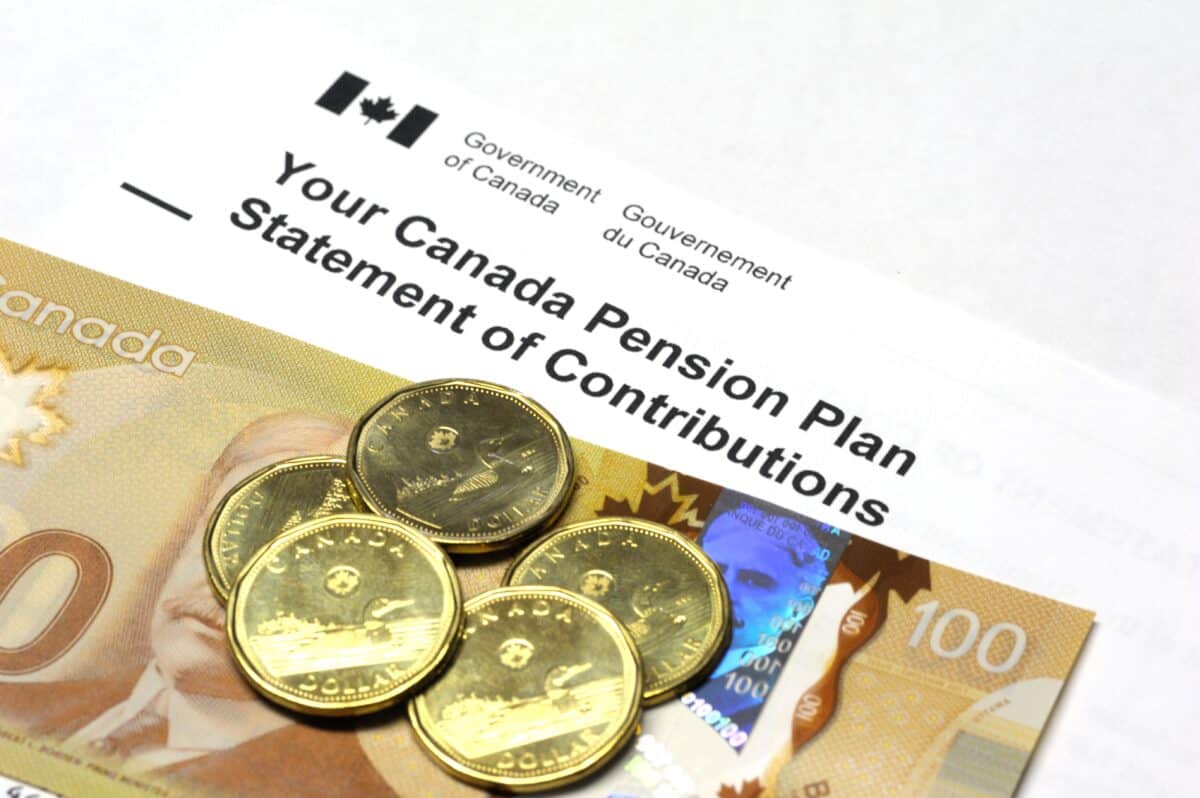The Canada Pension Plan (CPP) is a vital part of many Canadians’ retirement income. For 2024, the maximum monthly benefit is $1,937.73. Yet it’s not likely most Canadians will ever see that amount of cash.
Still, if you’re aiming to maximize your CPP payouts, understanding how the system works and employing specific strategies throughout your working life is crucial. So let’s go over the top strategies to help you boost your CPP benefits. And how you can turn them into even more.
Contribute
One of the most straightforward ways to increase your CPP benefit is to ensure you’re contributing the maximum amount. CPP contributions are based on your income. Aim to earn at least the Year’s Maximum Pensionable Earnings (YMPE) each year, which is $66,600 for 2023. This ensures you’re contributing the maximum amount possible.
Then, don’t just take them out! While you can start receiving CPP benefits as early as age 60, delaying your payments can significantly boost your monthly payout. In fact, if you delay taking CPP until age 70, your payments will increase by 8.4% for each year you delay after age 65. This can result in a substantial increase in your monthly benefits, making a significant difference in your retirement income.
While this will mean you would keep working, it also means you can keep contributing. And this will only increase your benefits even more!
Claim everything
There are also other ways to claim more CPP benefits, ones that every Canadian should consider. For those who took time off work to raise children, the Child Rearing Drop-out Provision can help maximize CPP benefits. If you had lower earnings because you were raising children under the age of seven, you can apply to have these years excluded from your CPP calculation. This can help increase your benefits by not counting those lower-earning years.
Furthermore, if you are widowed you may be eligible to receive a combined benefit from your own CPP and a survivor’s benefit from your deceased spouse’s CPP. This can provide a significant boost to your monthly income.
Finally, there is also the post-retirement benefit (PRB) for those working while receiving CPP under 70. This will increase your CPP benefits each year you contribute, even after you start receiving your pension.
Make it even more
Another way to boost that income? Invest! Investing in dividend stocks or exchange-traded funds (ETF) can amplify your CPP benefits by providing a steady stream of passive income, which can supplement your retirement funds and help combat inflation. By selecting well-established companies with a history of paying reliable and increasing dividends, you can reinvest these earnings to buy more shares, further compounding your investment growth over time.
Another method is to focus on ETFs that invest in all those well-established companies – one such as the Vanguard FTSE Canadian High Dividend Yield Index ETF (TSX:VDY). This ETF provides diversified exposure to a broad range of high-quality, dividend-paying Canadian companies, reducing the risk associated with investing in individual stocks. It focuses on firms with strong financial health and a track record of paying consistent and growing dividends, offering a reliable income stream.
Plus, VDY’s low management fees make it a cost-effective investment, allowing you to retain more of your returns. By including VDY in your portfolio, you can benefit from both capital appreciation and regular dividend income, enhancing your overall investment strategy and supporting your financial goals in retirement.
Bottom line
So let’s say you earned that maximum $1,937.73 each month. You then invest it into VDY, at $23,252.76 for the year. Here’s what that could bring in through both returns and dividends, with VDY continuing its compound annual growth rate (CAGR) of 7% in the last five years.
| COMPANY | RECENT PRICE | NUMBER OF SHARES | DIVIDEND | TOTAL PAYOUT | FREQUENCY | PORTFOLIO TOTAL |
| VDY – now | $42 | 554 | $2.11 | $1,147.84 | monthly | $23,252.76 |
| VDY – 7% | $45 | 554 | $2.11 | $1,147.84 | monthly | $24,930 |
Now not only are you making an additional $1,147.84 in dividend income, at $95.65 monthly, but returns of $1,677.24! All by just investing that government money.








